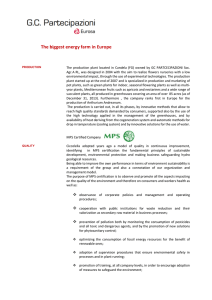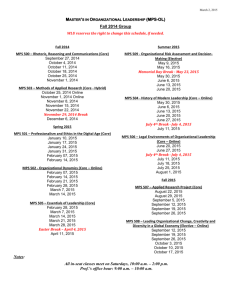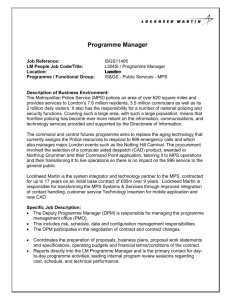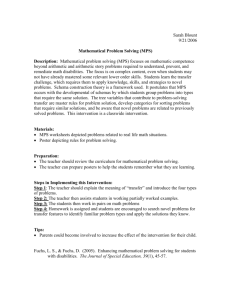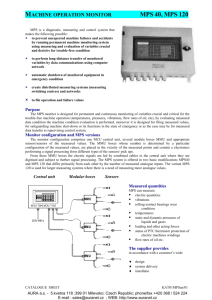group exercise - McGraw Hill Higher Education
advertisement
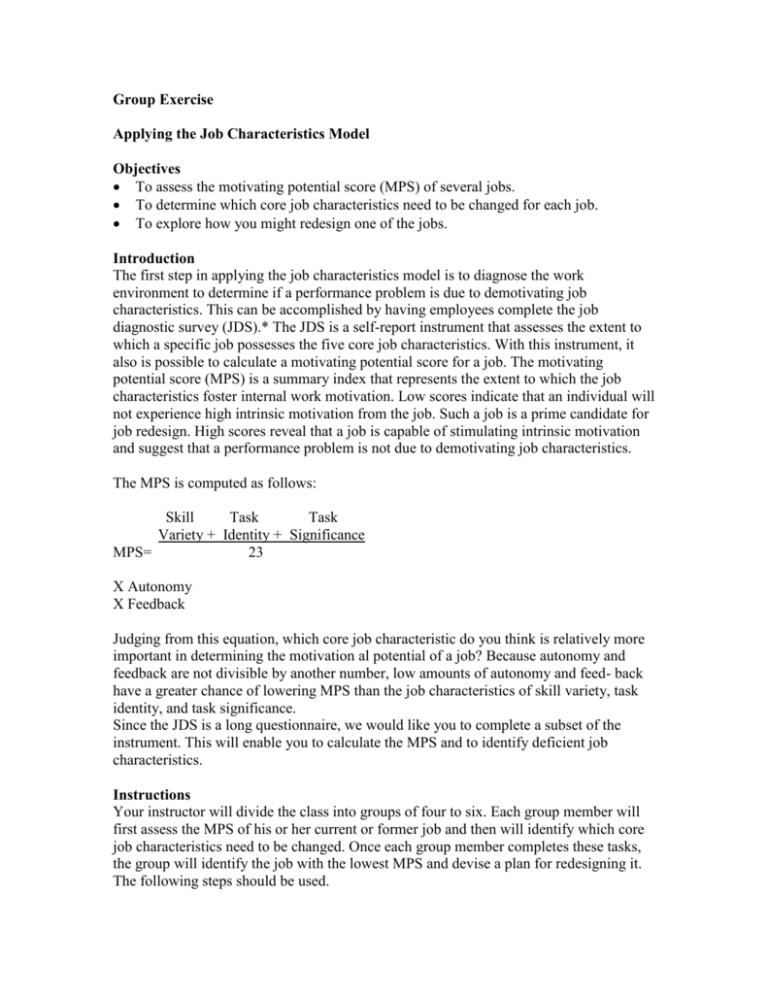
Group Exercise Applying the Job Characteristics Model Objectives To assess the motivating potential score (MPS) of several jobs. To determine which core job characteristics need to be changed for each job. To explore how you might redesign one of the jobs. Introduction The first step in applying the job characteristics model is to diagnose the work environment to determine if a performance problem is due to demotivating job characteristics. This can be accomplished by having employees complete the job diagnostic survey (JDS).* The JDS is a self-report instrument that assesses the extent to which a specific job possesses the five core job characteristics. With this instrument, it also is possible to calculate a motivating potential score for a job. The motivating potential score (MPS) is a summary index that represents the extent to which the job characteristics foster internal work motivation. Low scores indicate that an individual will not experience high intrinsic motivation from the job. Such a job is a prime candidate for job redesign. High scores reveal that a job is capable of stimulating intrinsic motivation and suggest that a performance problem is not due to demotivating job characteristics. The MPS is computed as follows: Skill Task Task Variety + Identity + Significance MPS= 23 X Autonomy X Feedback Judging from this equation, which core job characteristic do you think is relatively more important in determining the motivation al potential of a job? Because autonomy and feedback are not divisible by another number, low amounts of autonomy and feed- back have a greater chance of lowering MPS than the job characteristics of skill variety, task identity, and task significance. Since the JDS is a long questionnaire, we would like you to complete a subset of the instrument. This will enable you to calculate the MPS and to identify deficient job characteristics. Instructions Your instructor will divide the class into groups of four to six. Each group member will first assess the MPS of his or her current or former job and then will identify which core job characteristics need to be changed. Once each group member completes these tasks, the group will identify the job with the lowest MPS and devise a plan for redesigning it. The following steps should be used. You should first complete the 12 items from the JDS. For each item, indicate whether it is an accurate or inaccurate description of your current or most recent job by selecting one number from the scale provided. Write your response in the space provided next to each item. After completing the JDS, use the scoring key to compute a total score for each of the core job characteristics. 1 = very inaccurate 2 = mostly inaccurate 3 = slightly inaccurate 4 = uncertain 5 = slightly accurate 6 = mostly accurate 7 = very accurate __ 1. Supervisors often let me know how well they think I am performing the job. __ 2. The job requires me to use a number of complex or high-level skills. __ 3. The job is arranged so that I have the chance to do an entire piece of work from beginning to end. __ 4. Just doing the work required by the job provides many chances for me to figure out how well I am doing. __ 5. The job is not simple and repetitive. __ 6. This job is one where a lot of other people can be affected by how well the work gets done. __ 7. The job does not deny me the chance to use my personal initiative or judgment in carrying out the work. __ 8. The job provides me the chance to completely finish the pieces of work I begin. __ 9. The job itself provides plenty of clues about whether or not I am performing well. __ 10. The job gives me considerable opportunity for independence and freedom in how I do the work. __ 11. The job itself is very significant or important in the broader scheme of things. __ 12. The supervisors and co-workers on this job almost always give me “feedback” about how well I am doing in my work. Scoring Key Compute the average of the two items that measure each job characteristic. Skill variety (2 and 5) Task identity (3 and 8) Task significance (6 and 11) Autonomy (7 and 10) Feedback from job itself (4 and 9) Feedback from others (1 and 12) Now you are ready to calculate the MPS. First, you need to compute a total score for the feedback job characteristic. This is done by computing the average of the job characteristics entitled “feedback from job itself” and “feedback from others.” Second, use the MPS formula presented earlier to compute the MPS. Finally, use the JDS norms provided to interpret the relative status of the MPS and each individual job characteristic. Once all group members have finished these activities, convene as a group to complete the exercise. Each group member should present his or her results and interpretations of the strengths and deficiencies of the job characteristics. Next, pick the job within the group that has the lowest MPS. Prior to redesigning this job, however, each group member needs more back- ground information. The individual who works in the lowest MPS job should thus provide a thorough description of the job, including its associated tasks, responsibilities, and reporting relationships. A brief overview of the general working environment is also useful. With this information in hand, the group should now devise a detailed plan for how it would redesign the job. Norms TYPE OF JOB Professional/ Technical Clerical Sales Service Skill variety 5.4 4.0 4.8 5.0 Task Identity 5.1 4.7 4.4 4.7 Task significance 5.6 5.3 5.5 5.7 Autonomy 5.4 4.5 4.8 5.0 Feedback from job itself 5.1 4.6 5.4 5.1 Feedback from others 4.2 4.0 3.6 3.8 MPS 135 90 106 114 Questions for Discussion 1. Using the norms, which job characteristics are high, average, or low for the job being redesigned? 2. Which job characteristics did you change? Why? 3. How would you specifically redesign the job under consideration? 4. What would be the difficulties in implementing the job characteristics model in a large organization? R. Kreitner and A. Kinicki, Organizational Behavior, 7th edition, 2007. Reprinted with permission of The McGraw-Hill Companies.
